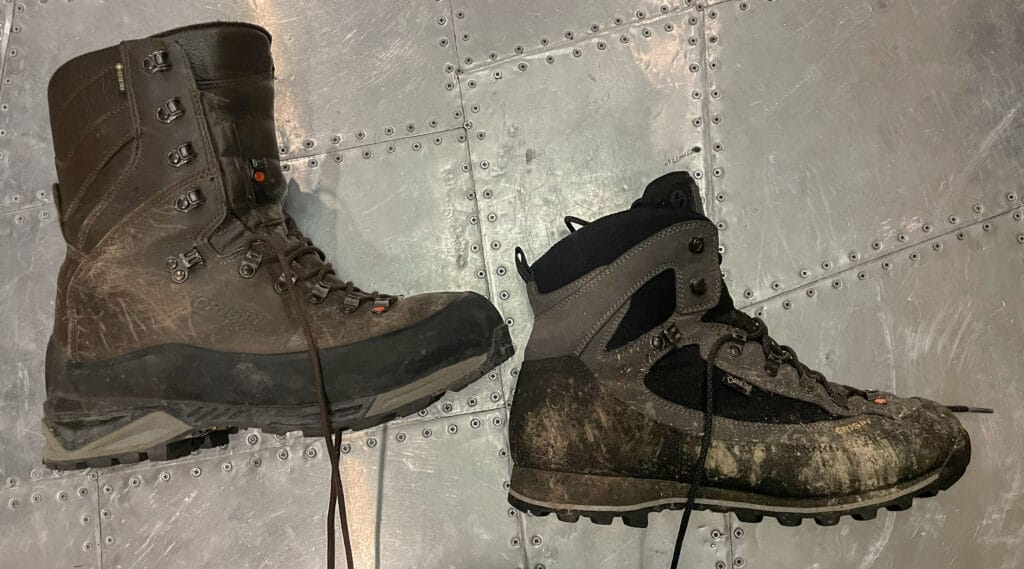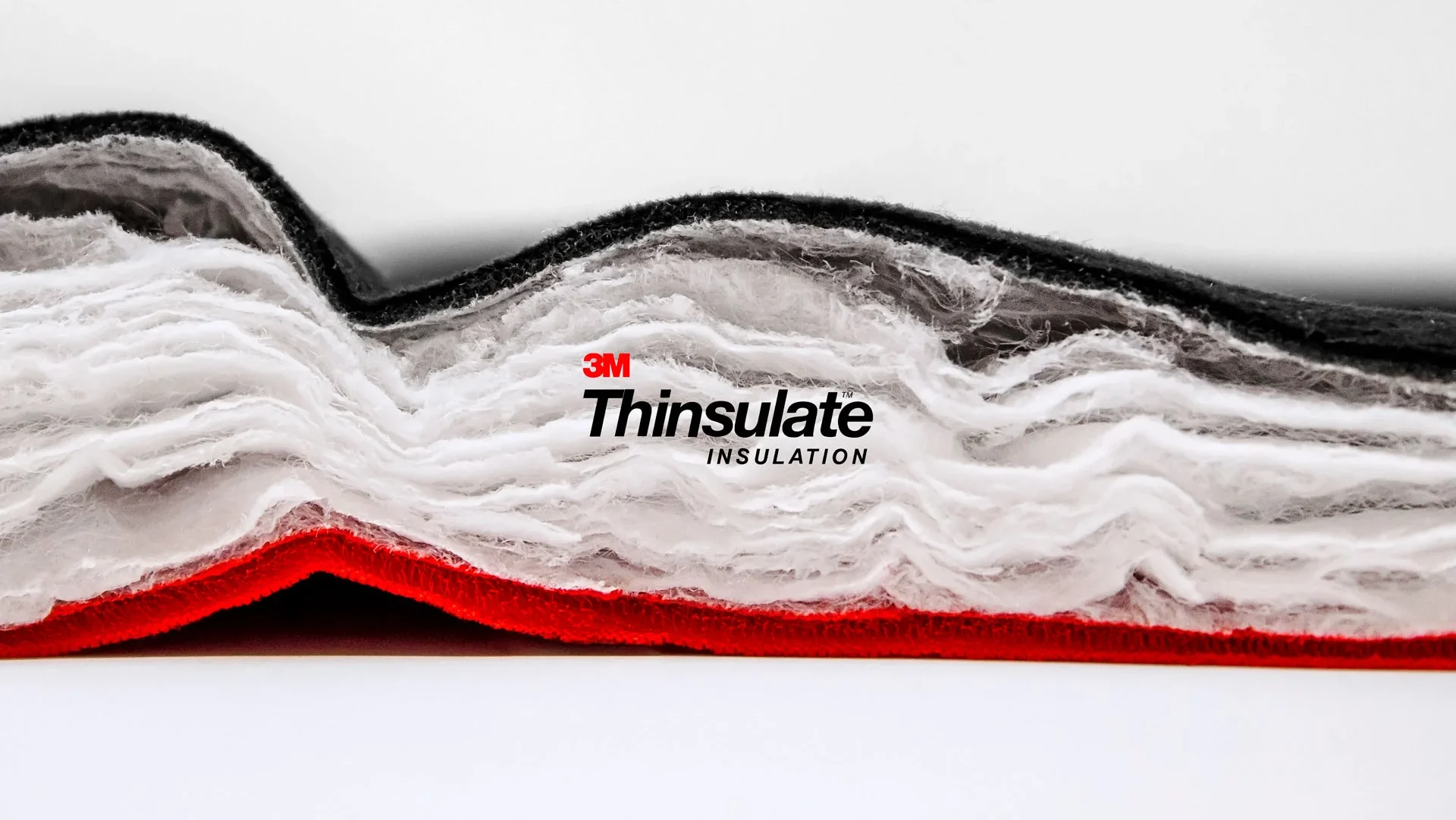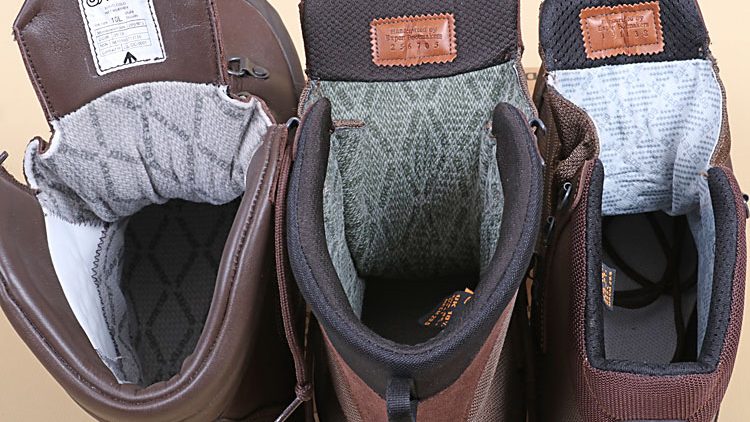When gearing up for a successful hunting expedition, choosing the proper boots is crucial for comfort, warmth, and overall performance. One common question among hunters is, “What gram insulation for hunting boots?”
Understanding the appropriate insulation level for your hunting boots is essential for ensuring you stay comfortable and protected in various outdoor conditions.
Whether you’re a seasoned hunter or a newcomer, understanding the significance of insulation grams will undoubtedly enhance your outdoor experience.
Insulation of Boots
Boots with insulation are designed to maintain warmth for your feet during cold activities like walking, playing, or working. The market offers diverse insulation types and weights, posing a challenge in selecting suitable boots. This guide aims to clarify insulation varieties and the required weight for specific weather conditions.
What Isn’t Insulation?
Let’s begin by discussing what isn’t considered insulation. When searching for boots, you may encounter a lot of “jargon,” including terms like Gore-Tex and Thermaplush, which can be confusing.
While Gore-Tex insulation exists, ensure you’re not buying boots with a Gore-Tex membrane unless specified. This membrane is applied to make boots waterproof but doesn’t provide insulation.
Despite its name, Thermaplush is not insulation; it’s the innermost layer of the boot added for comfort, lacking heating or heat-trapping properties.
What is gram insulation for hunting boots?
Hunting boots come with varying levels of insulation designed to cater to diverse environmental conditions and activity levels.
The 400 G insulation is ideal for cold to above-freezing conditions with an active lifestyle, balancing warmth and breathability. The 600G insulation is well-suited for scenarios where snow covers the ground, making it suitable for inactive and active periods.

Suppose you’re in an environment with multiple inches of snow on the ground and engaging in low activity. In that case, the 800G insulation provides heightened warmth.
In the harshest conditions, like frigid and windy weather during inactive to low activity periods, the 1000G insulation provides ultimate protection, guaranteeing warmth and comfort for your feet in the most challenging hunting environments
Selecting the right insulation level ensures that your hunting boots perform optimally and stay comfortable throughout outdoor pursuits.
Thinsulate Insulation
Boots offer a variety of insulation types today, with Thinsulate and shearling being the most popular. Thinsulate is the most commonly used insulation for boots due to its effectiveness, durability, and resistance to breaking down.
Thinsulate is bulky and heavy and maintains its insulating capability even when wet. In the case of Thinsulate and similar synthetic insulations, they work by trapping air molecules within the microfiber. This trapped air forms a barrier against cold outside air, preventing it from entering the boots.
Additionally, it hinders the escape of heat from the inside, ensuring your feet stay comfortably warm. While Thinsulate is a leading microfiber synthetic insulation, alternatives like HeatSeeker, Zylet, OptiWarm, and Primaloft are also available.
Types of Insulation Used in Hunting Boots
Thinsulate

Thinsulate is a synthetic insulation material developed by 3M. It is lightweight and provides effective insulation without adding bulk to the boots. Renowned for its impressive warmth-to-thickness ratio, insulation is a preferred option for hunting boots, maintaining its insulating effectiveness even in wet conditions.
PrimaLoft
PrimaLoft is a synthetic microfiber insulation material miming the warmth and softness of down. It is designed to be water-resistant and retains its insulating properties when wet. PrimaLoft insulation offers a good balance of warmth, comfort, and water resistance. It is often used in high-performance hunting boots.
GORE-TEX Insulation

GORE-TEX is a breathable and waterproof membrane often combined with insulation to create a waterproof and insulated barrier in hunting boots. GORE-TEX insulation is both waterproof and insulated, keeping your feet dry and warm in various weather conditions. It is also highly breathable, promoting moisture management.
Thermolite
Thermolite is a lightweight synthetic insulation material that provides warmth without bulk. It is designed to dry quickly and wick moisture away from the feet. Thermolite insulation is known for its moisture-wicking properties, helping to keep feet dry. It is often used in hunting boots designed for cold and wet conditions.
Wool
Wool is a natural insulating material that has been used for centuries. It provides warmth even when wet and has moisture-wicking properties. Wool insulation is known for its natural warmth, breathability, and ability to regulate temperature. It is often used with other materials to enhance insulation in hunting boots.
600 or 800 Gram Thinsulate

Thinsulate insulation is often categorized by grams per square meter. Boots may come with 600 or 800 grams of Thinsulate insulation, indicating the amount of warmth provided. Higher gram insulation is suitable for icy conditions. Lower gram insulation may be preferred for milder temperatures, providing versatility in different hunting environments.
Types of Gram Insulation Used in Hunting Boots
Hunting boots often feature different levels of insulation measured in grams per square meter. The amount of insulation can impact the warmth of the boots in various conditions. Here are common types of gram insulation used in hunting boots:
200 Gram Insulation
Footwear equipped with 200 grams of insulation is ideal for conditions ranging from mild to excellent. They provide moderate warmth and are often preferred for early-season hunting or active people who generate body heat.
400 Gram Insulation
Boots with 400 grams of insulation offer more warmth than the 200-gram option. They are suitable for colder temperatures and versatile enough for various hunting environments.
600 Gram Insulation
Boots with 600 grams of insulation provide a higher level of warmth, making them suitable for colder weather conditions. They are a good choice for late-season hunting when temperatures drop.
800 Gram Insulation
Boots with 800 grams of insulation offer significant warmth. They are ideal for cold conditions, such as winter hunting in frigid climates.
1000 Gram Insulation and Above
Boots with 1000 grams or more insulation are designed for extreme cold. They suit winter hunting in harsh environments where staying warm is crucial.
Conclusion
Boots with insulation are designed to keep your feet warm during various outdoor pursuits. Still, it’s essential to recognize what isn’t insulation. Terms like Gore-Tex and Thermaplush, while commonly associated with boots, are not insulation but serve different purposes, such as waterproofing and added comfort.
Regarding gram insulation, the appropriate level depends on the prevailing weather conditions and your expected activity level.
Whether it’s the moderate warmth of 200 grams for early-season hunting or the extreme protection of 1000 grams and above for frigid and windy conditions, choosing the proper insulation ensures optimal performance.

